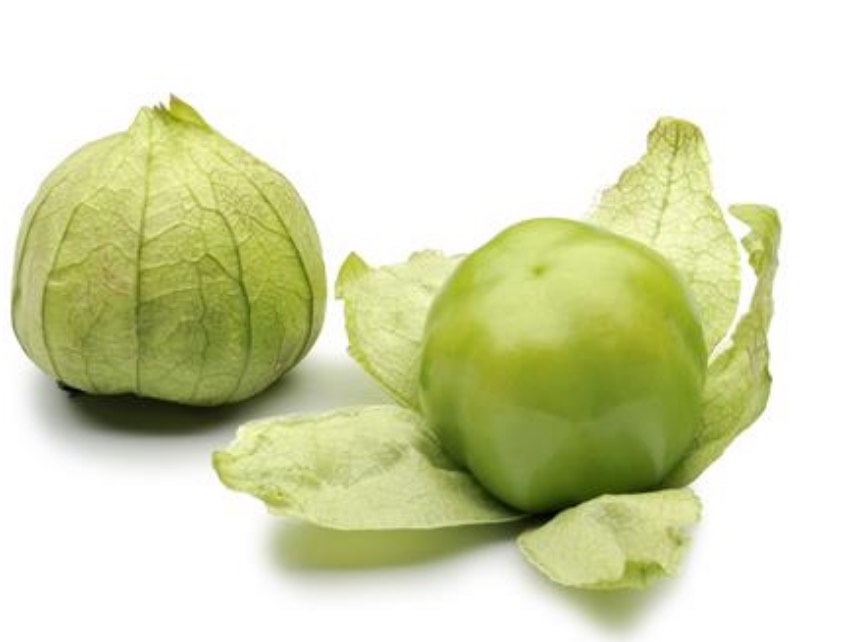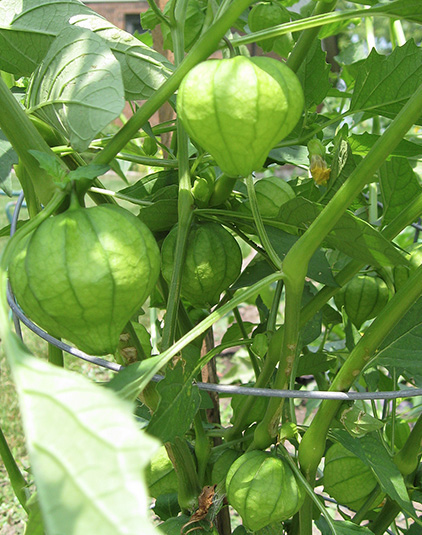International Gardener
Tomatillos: Add a Mexican Flair to Your Cooking
By Pat Dickey, Fairfax Master Gardener

Tomatillo in husk and peeled
Tomatillos (Physalis ixocarpa and Physalis philadelphica) are of various small sizes, 1 to 3 inches in diameter, and look like paper lanterns on the vine. They are covered in light brown papery husks, called calyxes. The husks enlarge and cover the fruits and finally split when the fruits are mature. You will need to check the fruits to be sure they fill the husks, because sometimes they are also filled with air and are not quite ready to be picked. The fruits usually fall on the ground when they are ready. Some larger tomatillos need to be cut off the vine. All of them ripen to a yellowish green or purple color. The mature fruits are hard and have a tart, somewhat citrusy, flavor.
Plant tomatillos in full sun, and cage or stake them like tomatoes in your garden 2 to 3 feet apart. The vines are not as thick as those on tomatoes, and the tomatillos can become bushy and take up a lot of space. Tomatillos will also grow well in a five gallon container. They do not tolerate soggy, wet soil. A pH of 6.5 to 7.0 is preferred, and they require regular waterings of 1 to 1 ½ inches per week. Overall, tomatillos have some of the insect visitors that tomatoes have. Snails, slugs and beetles may eat the leaves. However, insects do not seem to bother them.

Tomatillos on the vine
Peel off the papery husks before using them. There will be a sticky film on the fruits that needs to be washed off. You can pan roast, broil or boil the tomatillos. You can also eat them raw if you first chop them finely. Cooking will give them a sweeter more mellow flavor. You do not need to seed them first. Cut them in half and put the cut side down on your cooking pan. Add them to salsa, sauces and other dishes. You can store them in the refrigerator for up to three weeks in their husks or one week on the counter. Use a paper bag for storage, not plastic.
Enjoy these unique fruits in your cooking adventures!
Resources
• Grow your Own Tomatoes and Tomatillos, Neil Bell, Amy Jo Detweiler, Heidi Noordijk, and Chip Bubl,
Oregon State University Extension Service
• Husk Tomato (Ground Cherry and Tomatillo) Growing Guide, Southern Exposure Seed Exchange
• Growing tomatillos and ground cherries in home gardens, Jill MacKenzie, University of
Minnesota Extension
• Your Guide to Growing the Biggest Tomatillos North of Mexico (Recipes), Good Housekeeping
• Growing Your Own Groundcherries, Julie M. Carpenter, Fairfax Gardening